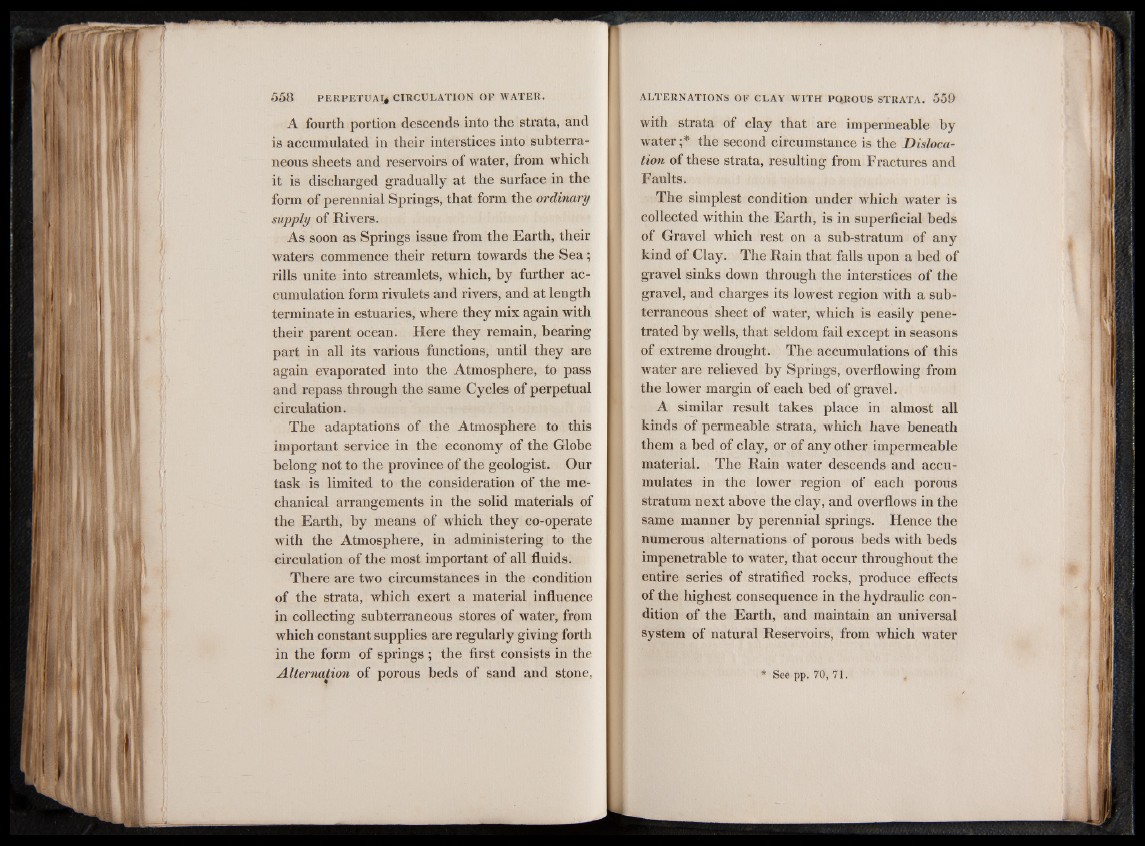
A fourth portion descends into the strata, and
is accumulated in their interstices into subterraneous
sheets and reservoirs of water, from which
it is discharged gradually at the surface in the
form of perennial Springs, that form the ordinary
supply of Rivers.
As soon as Springs issue from the Earth, their
waters commence their return towards the Sea ;
rills unite into streamlets, which, by further accumulation
form rivulets and rivers, and at length
terminate in estuaries, where they mix again with
their parent ocean. Here they remain, bearing
part in all its various functions, until they are
again evaporated into the Atmosphere, to pass
and repass through the same Cycles of perpetual
circulation.
The adaptations of the Atmosphere to this
important service in the economy of the Globe
belong not to the province of the geologist. Our
task is limited to the consideration of the mechanical
arrangements in the solid materials of
the Earth, by means of which they co-operate
with the Atmosphere, in administering to the
circulation of the most important of all fluids.
There are two circumstances in the condition
of the strata, which exert a material influence
in collecting subterraneous stores of water, from
which constant supplies are regularly giving forth
in the form of springs ; the first consists in the
Alternation of porous beds of sand and stone,
with strata of clay that are impermeable by
water ;* the second circumstance is the Dislocation
of these strata, resulting from Fractures and
Faults.
The simplest condition under which water is
collected within the Earth, is in superficial beds
of Gravel which rest on a sub-stratum of any
kind of Clay. The Rain that falls upon a bed of
gravel sinks down through the interstices of the
gravel, and charges its lowest region with a subterraneous
sheet of water, which is easily penetrated
by wells, that seldom fail except in seasons
of extreme drought. The accumulations of this
water are relieved by Springs, overflowing from
the lower margin of each bed of gravel.
A similar result takes place in almost all
kinds of permeable strata, which have beneath
them a bed of clay, or of any other impermeable
material. The Rain water descends and accumulates
in the lower region of each porous
stratum next above the clay, and overflows in the
same manner by perennial springs. Hence the
numerous alternations of porous beds with beds
impenetrable to water, that occur throughout the
entire series of stratified rocks, produce effects
of the highest consequence in the hydraulic condition
of the Earth, and maintain an universal
system of natural Reservoirs, from which water
* See pp. 70, 71.